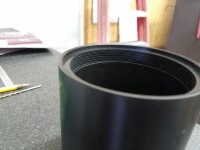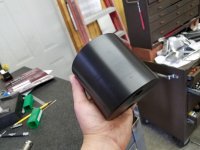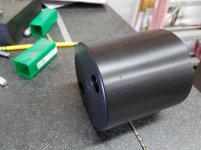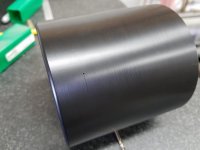antmob
Plastic
- Joined
- Jun 9, 2011
- Location
- San Jose, CA
Hello!
I have to make a part which calls out for a 3.5"-11 10 degree modified square thread (interal). I have no information about this type of thread other than what is in the 28th edition of the Machinery's Handbook page 1849. What I've figured out so far from the little information in the book and that the thread is 11 threads per inch (.0909 pitch) is that the root would measure .0494, the crest would measure .0415 and the height would measure .0454. I still don't know the major diameter of the internal thread. I'm not certain if my calculations are correct either. Can anybody offer any more information on this? Any would be greatly appreciated!
I have to make a part which calls out for a 3.5"-11 10 degree modified square thread (interal). I have no information about this type of thread other than what is in the 28th edition of the Machinery's Handbook page 1849. What I've figured out so far from the little information in the book and that the thread is 11 threads per inch (.0909 pitch) is that the root would measure .0494, the crest would measure .0415 and the height would measure .0454. I still don't know the major diameter of the internal thread. I'm not certain if my calculations are correct either. Can anybody offer any more information on this? Any would be greatly appreciated!








